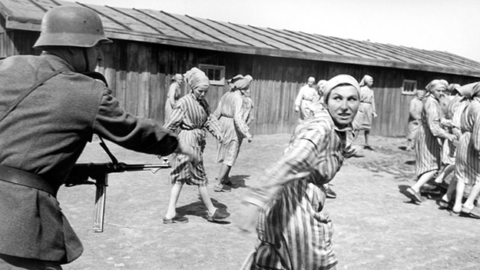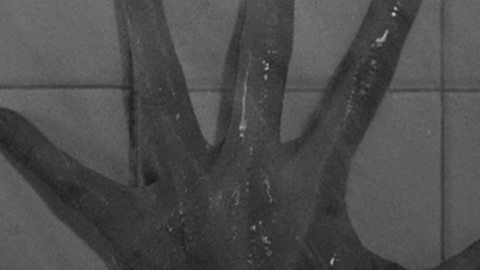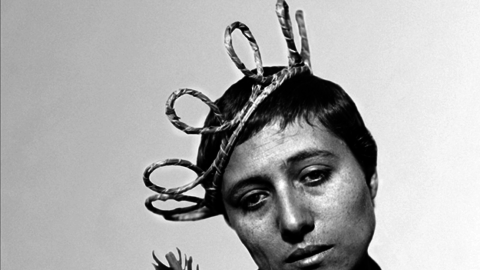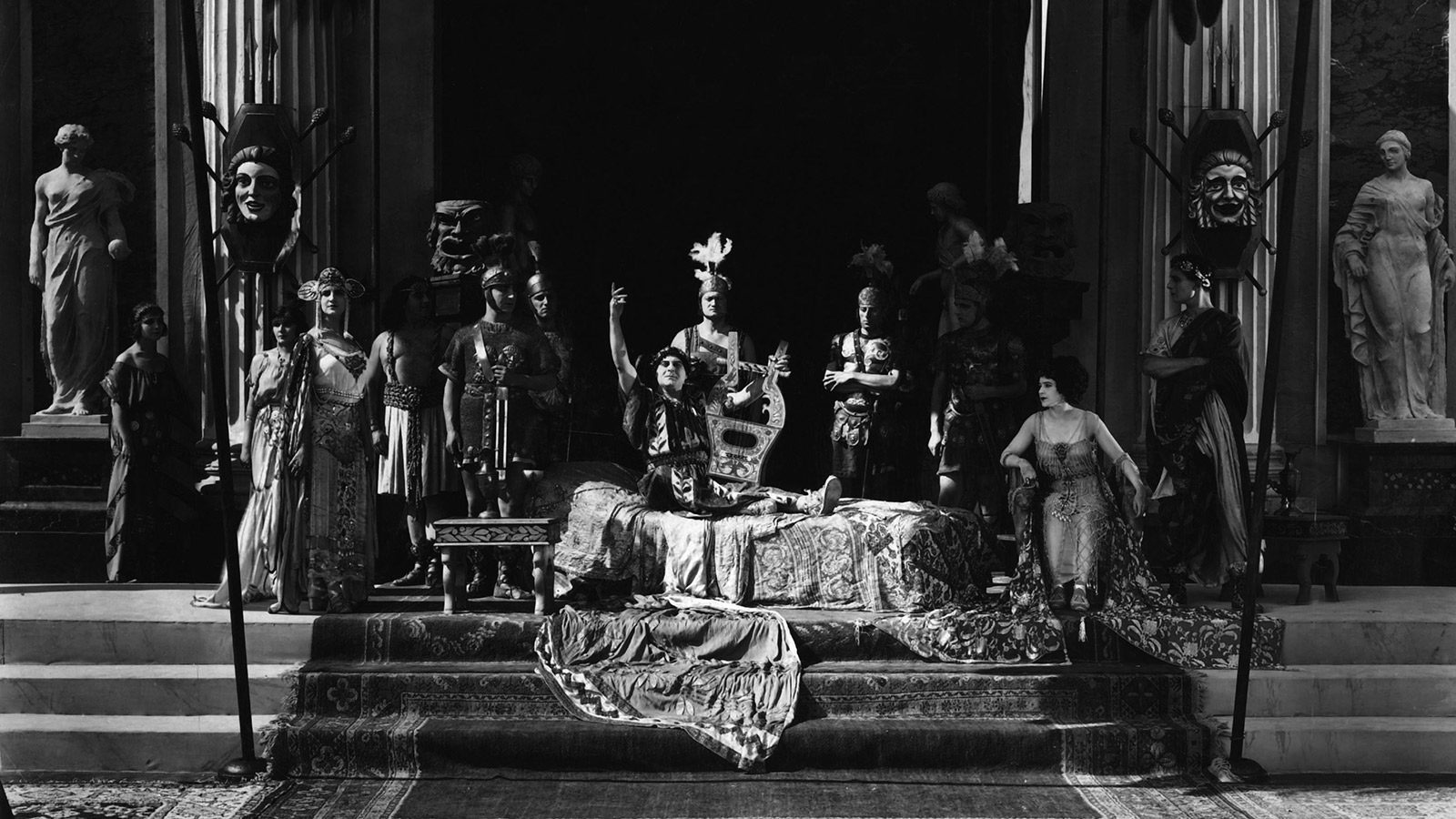
Game Changers: The Birth of Narrative
In December of 2010, a film I’d written and was to direct (The Jesuit, subsequently made by other hands) fell apart and I felt about to do the same. I knew that Andrew Sarris had given up his class at Columbia University for health reasons, so I called Annette Insdorf, Director of Undergraduate Studies, and asked if I could take Andy’s slot. I figured that the task of a five-hour class each week would prevent any precipitous slide into depression.
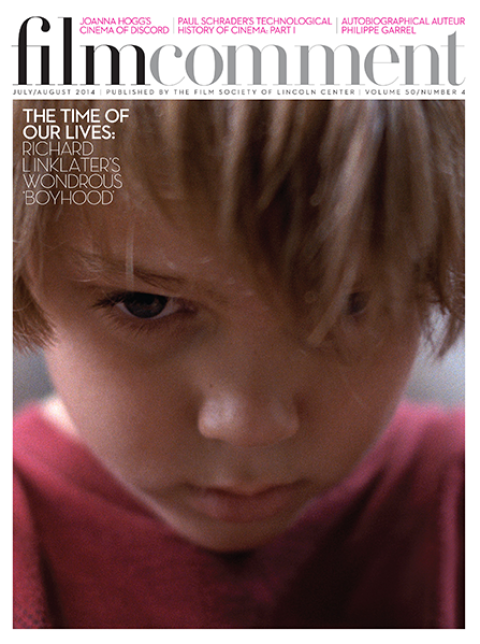
Annette said Andy’s class had already been taken but that she would carve out a slot for me. “What shall I teach?” “Whatever you want.”
I’d been interested in how film history interacts with film technology, so I thought I’d try that. This was the initial topic of the course: “Films That Changed Filmmaking.” Columbia grad student Robert Brink helped organize the classes and this series of articles. (After nine weeks I shifted gears, doing some classes on “Films That Changed Me,” which, perhaps, will be covered at a later time.)
INTRODUCTION
There are many perspectives from which to view film history—sociological, psychological, economic, political. Most often it’s viewed through the prism of art movements and a mixture of all of those modes, and often framed as a progression of artists. But the artist doesn’t invent the technology, and it’s important to remember that.
Motion pictures and photography are the first art forms that are solely the product of mechanical and chemical technology. All the other art forms existed in some pre-technological fashion—drawing, dance, oration—but there were no movies before there were machines. So it’s interesting to view the history of movies as the history of movie technology. You can track this history by tracking its technological advances—in short, a history of toys.
A lot of technology begins as toys—that is, something inherently not very useful. Entertainment technologies often appear first as tricks, diversions, baubles. A camera obscura. A zoetrope. Even Edison and the Lumières didn’t see the artistic ramifications of their inventions. But then the toys evolve and become something more. They become aesthetic tools. When viewing the history of film as a history of technology, the important thing is not so much the first moment that a film technology appears—though that’s critical—but the defining moment when that toy becomes a creative tool. When the divertissement becomes a vision. It’s interesting, for example, to know the name of the French chemist who first isolated yellow chromate pigments (Louis Nicolas Vauquelin), but it’s more exciting to see how J.M.W. Turner used those yellow pigments in his painting.
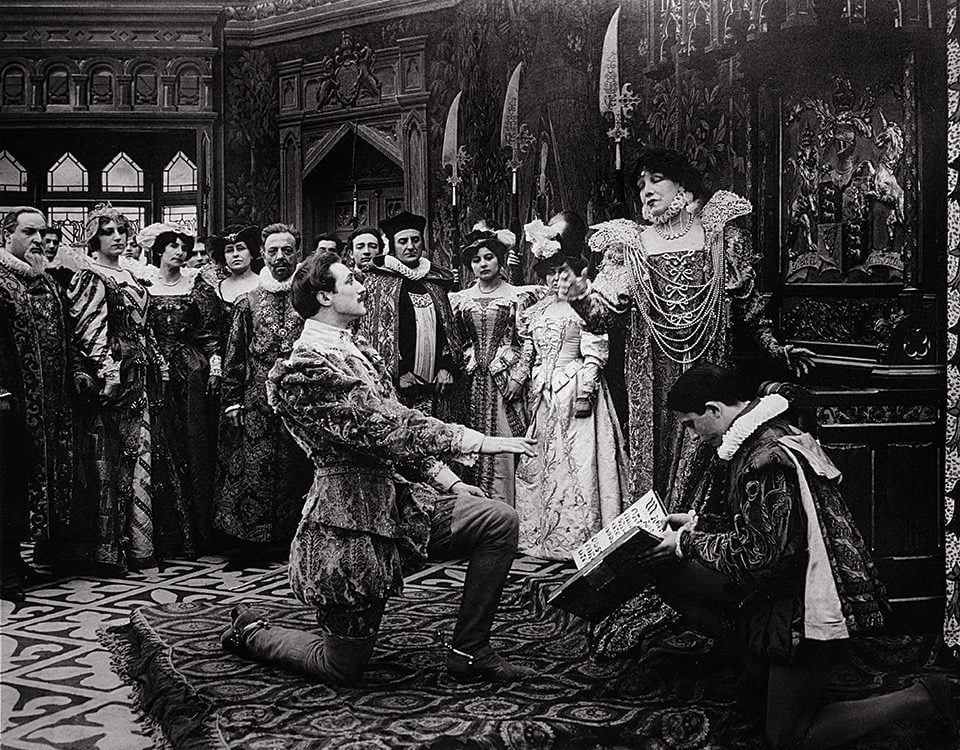
Queen Elizabeth
Looking at film history from the usual perspectives can feel like, well, history. It feels old. So my hope in taking this technological point of view is to try to get you to see things from the filmmaker’s perspective.
I myself can vividly remember when certain new technologies like the Steadicam and the Zeiss lenses came in, the excitement you felt when you could do what you couldn’t do before. The way you felt when you saw Avatar—and hopefully you saw it in IMAX—and went: “Wow, that’s another ball game.” Or Kinect—you can play games without a remote, waving your hands in front of a Kinect module and seeing a game world respond. A whole new arena of AV communication! That’s the kind of buzz filmmakers felt when they went to see Sunrise. It was that magical.
I recently watched a demonstration by the guys from Rockstar Games who did the Western video game Red Dead Redemption. They said that all new technology is essentially run by techies. And then at some point, somebody comes in from another field and makes it universal. And they were hoping that we were getting to that point with video games. We’re not there yet. It’s still in the realm of the techies.
Avatar
Think about digital technology in relation to theatrical film. It’s been around since the late Eighties, and the first film projected digitally was in 1998—The Last Broadcast. And then Michael Mann was the first director to show what that tool could do. Which is: it could see into the dark. In Collateral you see the night sky, the clouds. Digital electronics can penetrate the darkness in ways film chemistry cannot. Digital technology creates a new way to see the night.
I’ve selected specific technologies to look at in terms of how they evolved and which films adopted those technologies in a way that changed the game. There are other technologies I’d like to talk about, but I won’t. Some subjects won’t be discussed because I don’t feel I’m well enough informed. Lights get smaller and lenses get faster—we all know that—and when that happens, artistic opportunities expand: the opportunities to work on location, in smaller spaces, with available light and so forth. I’ll touch on that a bit, but I’m not going to talk color temperature. I just don’t know enough. I’m not going to do digital film capture or digital film effects because the field is in a state of constant evolution. Avatar is clearly a breakthrough, but how are we going to feel about digital beings five years from now? I’m not sure. Nor will I do 3-D and IMAX. There’s a future there, but what is it? We’re finding out.
I’m not going to talk about music either, though I’d like to. The Birth of a Nation is one of the first films for which a free-standing score was written, largely by D.W. Griffith, although to be honest it’s a composite of other scores, “The Ride of the Valkyries,” and so on. King Kong is the first film to have a wholly original synchronous score, and Sorcerer is the first non-science-fiction use of an all-synth score that I know of. Shortly thereafter Vangelis won an Oscar for Chariots of Fire. Gradually computer music took over the scoring world. There’s relatively little purely orchestral scoring anymore. Film scoring merits a whole course of its own.
https://www.youtube.com/watch?v=UYOY8dkhTpU
Looking across the continuum of innovation, you see that the first use of a film technology can have a major economic impact but not necessarily an artistic one. The case in point is The Jazz Singer. In 1927, that movie made a fortune; it just blew the box office wide open. The industry had been very reluctant to adopt sound, but all of a sudden, the battle was over. The silent film was a dead man walking. But just because The Jazz Singer was first doesn’t mean it addressed the aesthetic possibilities of sound. The Jazz Singer wasn’t a particularly intelligent use of sound. It was only partially sync sound and it was only used when Al Jolson was singing. It was still a trick—it wasn’t a tool yet. Sound really didn’t come into its own until a little later with films like Hitchcock’s Blackmail.
Sometimes a film will get an undeserving reputation for a certain kind of technical innovation. A good case in point is Citizen Kane. Gregg Toland was using the new coated lenses, which allowed him to let about 10 percent more light into the lens. And therefore the focal length was a little deeper. In the mythology of Hollywood the mantra has become that Gregg Toland and Orson Welles created deep-focus photography. Well, yeah, sort of. The fact is, Toland had used deep-focus photography before, and some of the most stunning “deep-focus” scenes in Kane aren’t even deep-focus—they were done with a split diopter and two different planes of focus.
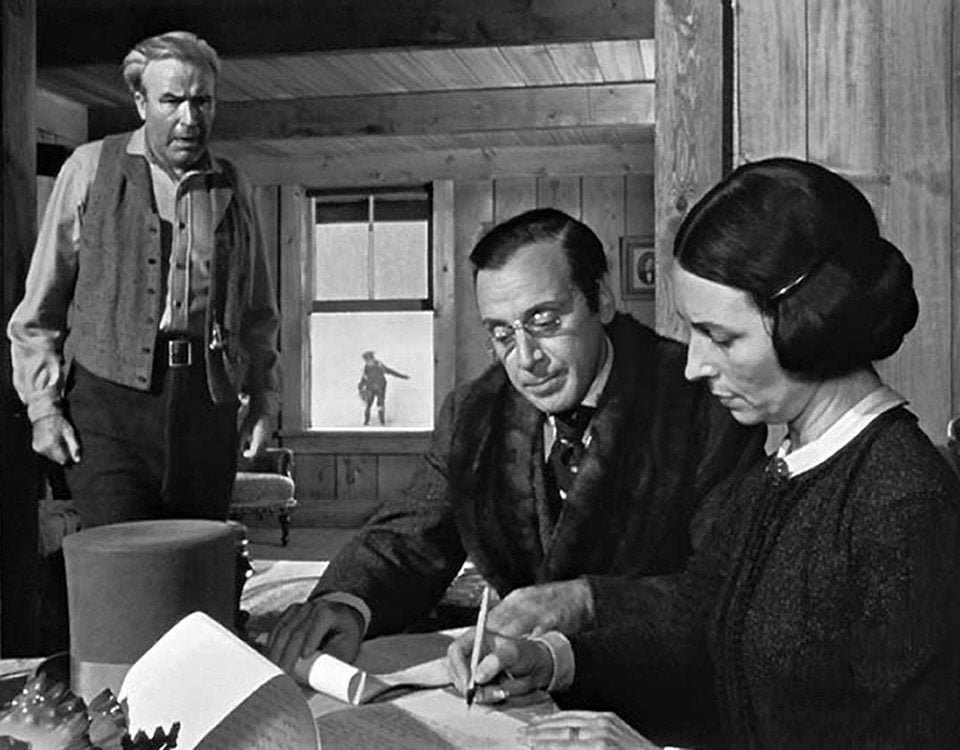
Citizen Kane
But the importance of Kane doesn’t lie in its technological innovations, legitimate or not. The importance of Citizen Kane is that it redefined toys as tools and in so doing changed the grammar of filmmaking and film aesthetics.
So it comes down to boys and their toys—in movies it’s usually boys. In the beginning they were directors like Walsh and Murnau. Today it’s Fincher and Zemeckis and Cameron. These are boys obsessed with toys who are also artists.
Most of the changes in filmmaking have been incremental. The Birth of a Nation and Citizen Kane are among the rare examples of instant milestones that changed everything.
In Queen Elizabeth, Quo Vadis?, and The Musketeers of Pig Alley you can see the excitement of storytelling being revolutionized. These film teams were working very fast. Griffith made 400 or so films for Biograph over a 10-year period.
Before discussing individual film technologies, I want to start with film narrative. In the U.S., Edison and Griffith tower over the birth of motion pictures. Edison was the king of toys and Griffith was the master of the toolbox. Edison may not have invented every entertainment toy, but he took credit for all of them. Griffith may not have turned every toy into a tool, but he came close.
The defining moment in film history occurred when the feature film emerged from the rudiments of film narrative. When Griffith started, films were for the most part an assortment of curiosities: tableaux vivants, visual oddities, slices of daily life, comic pratfalls. Griffith assembled these building blocks and built the feature narrative. It’s really hard to overestimate his importance. (Except of course if you’re Griffith himself—he had a high estimation of his own contributions.) In Griffith’s day, there was tension between hardware and software development—just as there is now. Griffith, of course, was making software. Biograph, Griffith’s primary employer, was making hardware. And through Biograph, Edison was using the software to sell the hardware, just as Apple uses iTunes to sell iPods and iPhones. Films were growing in length, from one-reelers (10 minutes) to two-reelers to films between 40 and 60 minutes long. And this is where Griffith wanted to take Biograph. Biograph, however, thought they could make more money sticking with the short form. They didn’t need a software revolution.
By 1912, the French film Queen Elizabeth, a Sarah Bernhardt vehicle, ran to four reels. Griffith was envious of Enrico Guazzoni’s 1913 Italian film, Quo Vadis?, which was two hours long. But in 1912, Griffith was only doing one- or two-reelers, like The Musketeers of Pig Alley. Griffith’s ambition spurred him to compete with these larger attractions like Judith of Bethulia and The Avenging Conscience (both released in 1914). In 1913, he took out a full-page ad in a publication called The Dramatic Mirror: “D.W. Griffith, producer of all great Biograph successes, revolutionizing the Motion Picture drama and founding the modern technique of the art. Included in his innovations are close-up figures, distant views as represented by Ramona, the switch-back [meaning the intercut], sustained suspense, the fade-out, and the restraint in expression, raising motion picture acting to the higher plane which has won for it recognition as a genuine art.” This is him talking about himself!
True, in general, but not in the specifics. Virtually everything he took credit for existed before he did it. He began as an actor and playwright, touring small-town America, which is one of the reasons he was so commercially successful: he understood popular taste and the mass audience. (There is a Biograph film in which Griffith, the actor, is seen in close-up. This was before he invented it, of course.) But Griffith managed to collect everything that was going on and package it. He was the father of real film narrative.
We call motion pictures before Griffith “The Cinema of Attractions.” A stroll down the midway: you’d look left, you’d look right, you’d see a nickelodeon show. Maybe it was a half-hour long, cost a nickel, and it re-created a famous event in history. Or maybe a travelogue through the Taj Mahal, or a freak show—actual physiological curiosities. To imagine the mindset, the perspective of the audience before The Birth of a Nation hit the screen in 1915, consider those three 1912 films—Queen Elizabeth, Quo Vadis?, and Griffith’s The Musketeers of Pig Alley.
Queen Elizabeth runs 40 minutes, but it is nonetheless a “cinema of attractions.” It is one of the only filmed performances of Sarah Bernhardt. If you lived outside a big city, this was your chance to see this internationally famous French stage actress. And at the same time, you saw Elizabeth and Essex in a historical re-creation. When Griffith stated his contributions, he included “restraint in expression,” i.e., understated acting—what we now call film acting. It was a reaction to theater acting. Witness Sarah Bernhardt’s sweeping hand gestures. When we watch Griffith’s Broken Blossoms or The Birth of a Nation today, we don’t see the understated acting he describes. It isn’t restrained by our standards. But it certainly was in 1912 terms. Stage actors don’t have amplification or powerful lights, and so they have to project the world out to the audience. So in Queen Elizabeth, the camera sits there: the performers project themselves toward us, and the setting frames the show like a proscenium.
As a consequence, after Essex is executed, Elizabeth notices that Essex’s ring is missing. And they have to put that on an intertitle. Whereas, obviously, the natural thing you do is cut to a close-up of the hand. But they didn’t. It wasn’t in the theater vocabulary.
By 1912, Griffith was already cutting to the hand, as we’ll see when we look at close-ups as a topic in their own right. But his very first close-ups were an attempt to show you something that you couldn’t otherwise see. They weren’t an attempt to create an emotion. They were simply expository.
Quo Vadis? came out two years before The Birth of a Nation. It is an Italian film—one of the exciting things about the early days of filmmaking was that it really was a time of worldwide cinema. It doesn’t take much work to swap out the titles, and translate the film for a whole new market. Quo Vadis? made Griffith want to make longer films.
What Griffith saw when he watched Quo Vadis? was the production values. Those scenes full of extras—it went beyond the scope of theater, into a scale that only film can register. And like The Birth of a Nation, Quo Vadis?is based on a novel. But in terms of camera placement and screen composition, it’s still very stage-bound.
That same year Griffith’s two-reeler The Musketeers of Pig Alley comes out—the first gangster film. You can actually see motion pictures maturing, moving from tableau-driven reenactments and stage dramas to drama seen from multiple manipulated angles. Toward the end of Musketeers, near the 13-minute mark, comes a famous shot in which one of the characters advances closer and closer to the camera until his face is in close-up, with an extraordinary partial image of that face being slowly revealed and then leaving the frame! It’s electrifying.
I wonder if Griffith understood the ramifications of this effect. So much of what we call innovation is actually a happy accident. In Elizabeth, Quo Vadis?, and Musketeers you can see the excitement of storytelling being revolutionized. These film teams were working very fast. Griffith made 400 or so films for Biograph over a 10-year period. Guazzoni made six costume epics the same year as Quo Vadis?.
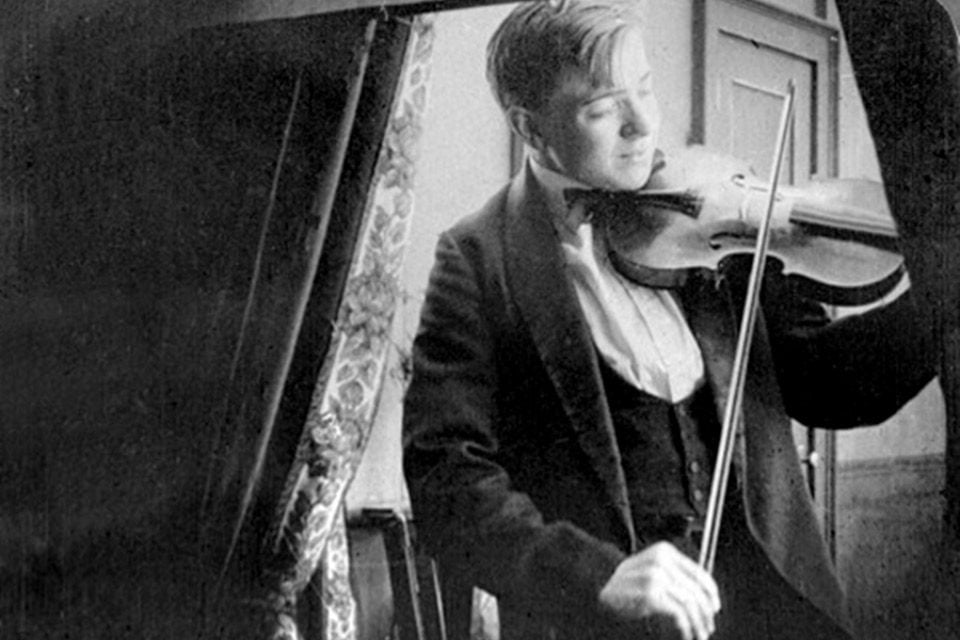
Home, Sweet Home
It was like shooting for YouTube today—two, three, or more a week. And that’s one of the reasons why a lot of directors today like to shoot commercials—apart from the paycheck, it allows them to keep working a lot, and when you work a lot, you try a lot of things. So there in Musketeers, you see that amazing shot in which, because of where Griffith places the camera in relation to the brick wall, the characters get right in front of the lens, and all of a sudden they’re heavy in the foreground. And because they were shooting in sunlight, the shot was still in focus—and it’s the only time that happens in that film. But Griffith was using that technique again in Home, Sweet Home (1914) and The Birth of a Nation. Someone says, “Oh, that’s really cool”—and boom, now it becomes part of the process.
Griffith lifted the medium up to its full powers of storytelling. He put it all together. Eisenstein writes about how Griffith used the parallel story technique that Charles Dickens employed, something that Griffith himself acknowledged. It’s important to remember that Griffith, for all of his revolutionary activity and self-promotion, was essentially a Victorian storyteller.
There are camera moves Griffith didn’t do. Common-sense narrative moves that others were starting to do, but that he didn’t incorporate. He didn’t do absolutely everything in silent cinema, although you sometimes have the impression that he did. He didn’t do point-of-view shots, at least not in the way we think of them today, although in Broken Blossoms there are a couple. He seized on the close-up, but he didn’t seize on the POV. That was left to someone else. When you watch early films in this way, you are seeing film history happen right before your eyes: happy accidents seized, mistakes discarded—a language being born.
In theater, you project an image out to the audience. In movies, the audience comes in and enters the image itself, starts walking around inside it. Which means that you get into characters’ eyelines, you get into over-the-shoulder shots and singles—you violate the actors’ space. Griffith didn’t really violate the space. He began the process, but he held back. In a sense, he was still looking at the story from “out there.”
But the Griffith film that changed filmmaking forever was The Birth of a Nation. It’s pretty hard to stomach these days. When it was first shown in 1915, it was still called The Clansman, after the Thomas Dixon novel. You remember it as being kind of racist and inflammatory, and then you watch it again, and it’s like wow: there is an hour-and-a-half of wall-to-wall racist ideology. While some say that the film can be excused because at the time this ideology was acceptable, on the contrary, it wasn’t even acceptable then in much of the country. There were riots around the U.S.
It’s hard to watch. But you cannot not watch it, if you’re interested in the history of this art. It stands there at the threshold of the feature film. And you can only get through the door watching that film. But the other reason it changed movie history is that it cost $100,000 and made $10 million. If you crunch the numbers, Birth is still probably the most profitable film ever made, with a ratio of a hundred to one. Today, if a film returns its investment by tenfold, that’s extraordinary.
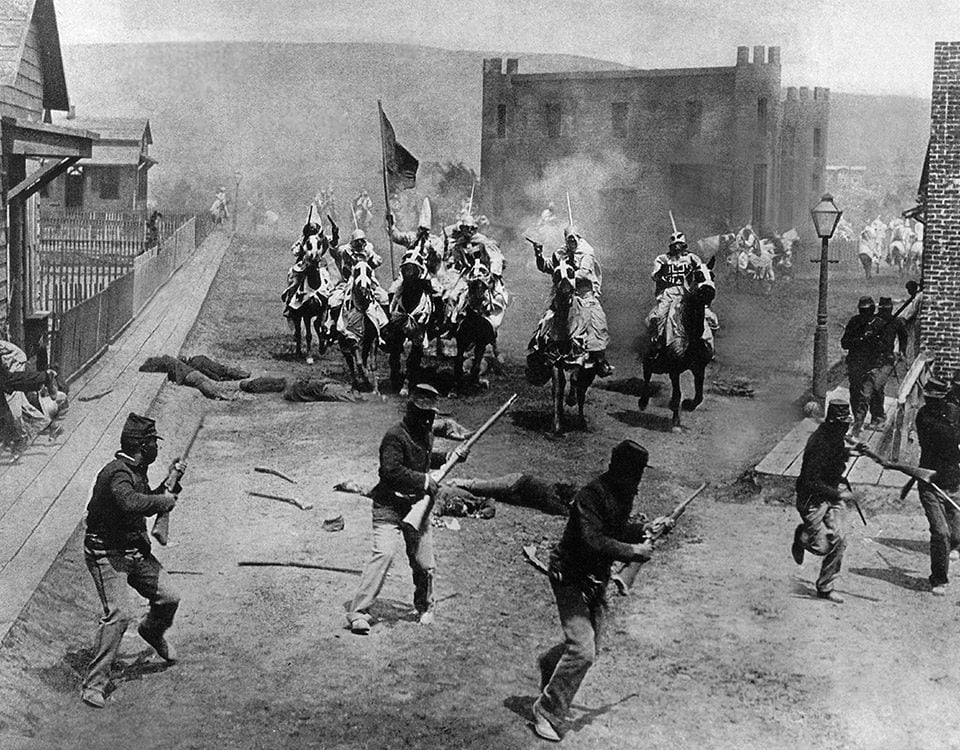
Birth of a Nation
To appreciate the innovation that The Birth of a Nation represents, think about its premiere: February 8, 1915 at the Clune’s Auditorium in downtown Los Angeles. They projected the film in an auditorium, because they hadn’t built the big movie palaces yet. That was another by-product of The Birth of a Nation. It enabled the creation of the film exhibition industry. In every metropolis, huge movie palaces were built, once Griffith proved you could fill them.
The film went far beyond the scale and grandeur of an attraction or curiosity. The entire Los Angeles Philharmonic was there: they started up, they played the overture, and the curtain rose. The film was 190 minutes with an intermission. It was a full evening. Unlike a one-reel film curiosity, it involved the spectator. Even the stuff that we object to, like the ride of the Klan, is transporting. And the battle sequence is thrilling. Griffith was transforming those nickelodeon conventions like historical reenactment—you see Grant, Lee, and Lincoln in the film—with the narrative sweep of a historical novel.
Griffith was a master of the chase, and in film after film he really could get people up and excited. He claimed to be the first one to do that—and he is very close to being the first, not in this film, but about eight years earlier, when he started doing intercutting. The chase, more than any other type of film scene, distinguishes movies from earlier forms of narrative. It pulls the viewer into the spectacle.
What must it have been like in that auditorium? Nobody could quite believe what was going on. President Wilson supposedly said The Birth of a Nation was like watching history written with lightning. One of the great questions about Griffith is: was he first a racist ideologue and secondly a showman, or vice versa? He did want to create trouble with The Birth of a Nation, he did want to have something incendiary that would get everybody talking. There’s an anecdote that suggests that he didn’t do this naïvely or innocently, though he later said he did: at one point, somebody said, “You show this in Atlanta, there’s going to be a race riot.” He replied: “That would be great for box office!”
Without excusing the racist ideology of The Birth of a Nation, it’s fair to say that the dominant part of Griffith was the showman. And, in this case, his racism helped his showmanship. But later, when he made Intolerance (16) and then Broken Blossoms (19), it was in his best interests to appear anti-racist. So then he was anti-racist.
Griffith was really not any different from our current entertainment industry moralists. He was a showman first, and his morality was adjusted to the circumstances. Take his 1918 film Hearts of the World. Griffith was brought to England with great fanfare, just as the U.S. was entering into World War I, by Lord Beaverbrook, who was sort of the Rupert Murdoch of his time. The man who made The Birth of a Nation was going to make a film about the war as it was actually happening. And he actually went on record saying that the war was “disappointing” as drama, but that it provided him with the most expensive “settings” that have ever been used in a movie. In other words, the war itself was his own, lavish set—his biggest and most expensive toy ever.
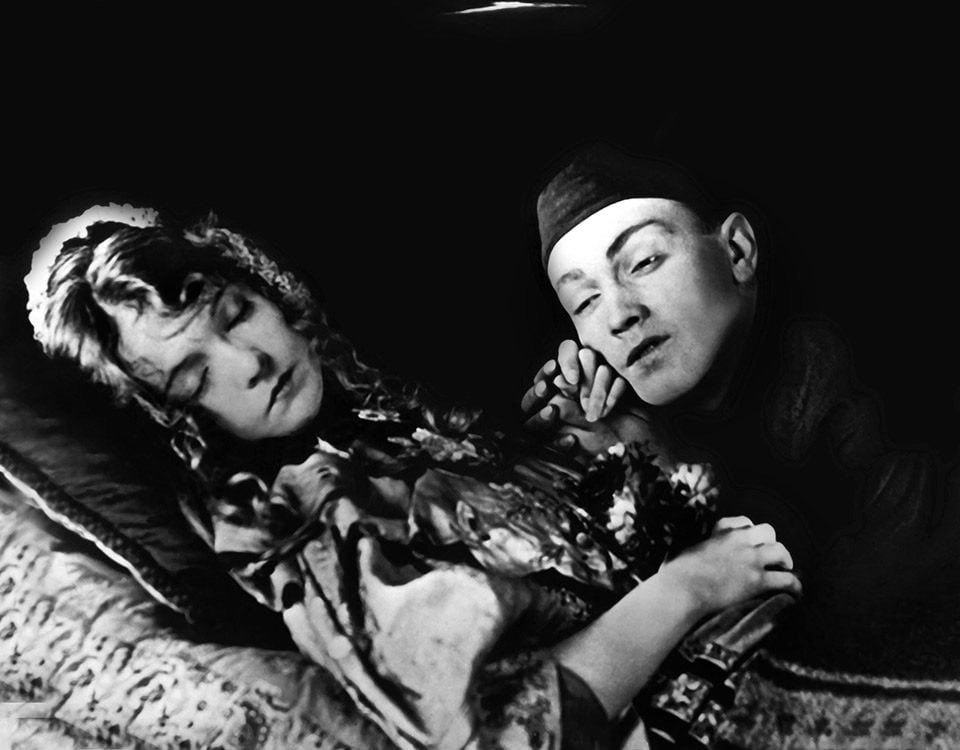
Broken Blossoms
When Griffith was trying to raise the money to make The Birth of a Nation, for the then-outrageous amount of $40,000, they asked him what he had in mind. And he said that what he had in mind was a full evening of entertainment. It would be like a night at the opera. Before The Birth of a Nation, films were all different lengths. A film didn’t necessarily have to be an hour and a half or two hours. Today we’re coming to the end of that definition. We’re starting to see all kinds of different lengths again. After The Birth of a Nation, motion pictures left short attractions behind and developed the two-hour formula. It was a formula that made sense economically. It was the most efficient way to charge higher ticket prices to larger groups simultaneously. And when those economics change, so does the definition of film length and exhibition.
Right after The Birth of a Nation, Griffith made Intolerance, a response to being called out for his racism. And then, in 1919, he made another film, Broken Blossoms. He told a story in which the villain is the white father of a young woman, and her protector is a Chinese man. Griffith’s effort to recuperate his public image drove further innovation in Broken Blossoms. In The Birth of a Nation, he had raised the specter of miscegenation in order to make the case for the Southern White: a black character (ironically a white man in blackface) wants to do nothing more than violate white maidenhood. So Griffith decided to do a story that would be the opposite of anti-miscegenation propaganda, a story in which the person who’s the kindest to the white girl (Lillian Gish) is the Chinese man (Richard Barthelmess). Broken Blossoms was a hard sell—it ran against the grain of the prejudices of the time. And because it was such a hard sell, Griffith had to slow his storytelling down and take his time developing the interracial relationship.
Griffith hit upon the idea of extreme close-ups in which the focus was soft. They only had 30mm and 50mm lenses at that time; they didn’t have a telephoto lens. To get an extreme close-up, they had to push in very close—violating what at the time was called “the six-foot rule,” which stipulated that the camera was supposed to be no less than six feet away from the subject. At a distance of six feet from the filmed object, the camera is at the limit of its focal length. Griffith turned this limitation into a storytelling asset. He could make Lillian Gish’s expression soft and give Donald Crisp’s eyes that huge bulge. And at the crucial moments, he does go inside the eyeline. You actually see her point of view of her father.
And so Griffith ends up doing a character piece. Most of the films of that time, Griffith’s included, tended to have a Dickensian gallery of characters, but in Broken Blossoms there are only a small handful, and he spends a lot of time with Gish and Barthelmess. As a result, you get a greater complexity in the relationship between the man and the woman. There’s a plot, but really it’s a character study—and all of a sudden, storytelling is going to another place, a kind of isolated drama of individuals rather than whole social groups.
Looking at Griffith at the dawn of feature-film narrative, it’s possible to see how a single film can change filmmaking—and how it often creates change by happenstance. Griffith decided he wanted to tell this kind of story, and that entailed giving much more screen time to the two main characters. And so all of a sudden Lillian Gish is giving a far more nuanced performance than you’d typically see at that time. All the characters die at the end, and it’s a rather somber ending. Jesse Lasky, who financed Broken Blossoms and later created what would become Paramount, was furious at this and didn’t want to release it, leaving Griffith to figure out how to release it himself.
Then the filmmaker came up with the strategy of promoting the film as “edifying”—as an artwork that is ennobling. And it worked! He conned everyone into thinking that they had to see this film because it was good for them. Broken Blossoms actually did very well. And we still sell films that way today.
But Broken Blossoms also contains the seeds of Griffith’s demise. The film takes place in 1919, and World War I has just ended. The Great War is referred to in the film—one character says: “Only 40,000 killed this week.” And once those soldiers started coming home, modernism and a new kind of commercialism and a new kind of liberty and female empowerment took hold in America—and Griffith’s Victorian sentiment began to look really old-fashioned. He was not suited for the Jazz Age. The guys who were working with Griffith—Erich von Stroheim was an assistant on The Birth of a Nation, Karl Brown was an assistant cameraman, Raoul Walsh played John Wilkes Booth—were of the contemporary sensibility and by 1923-24 they were making films of that sensibility, whereas the old man was still doing Victorian sentimental cards. And as quickly as that, he was left behind.
Next: the close-up



